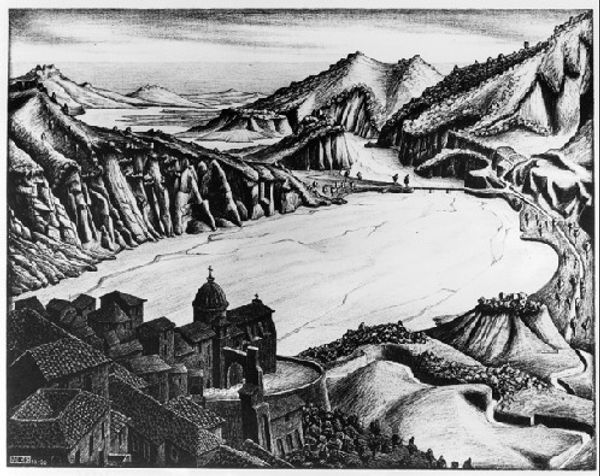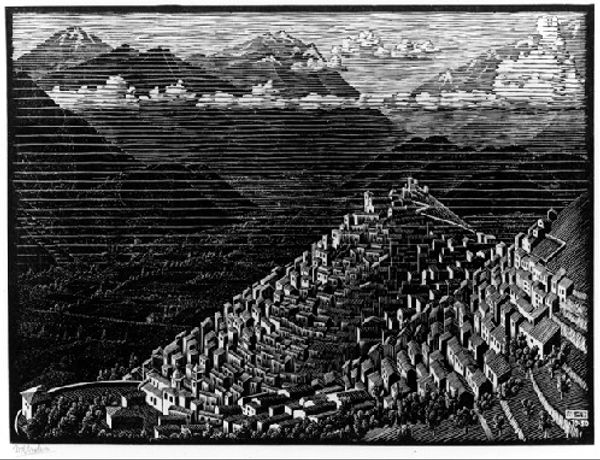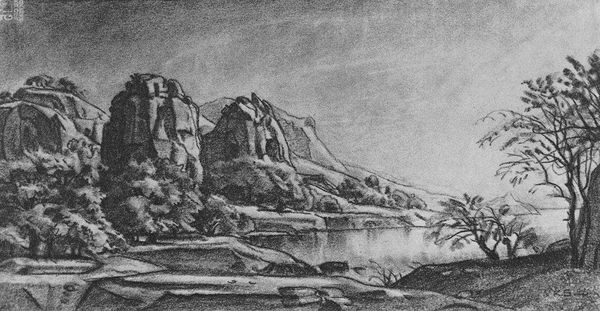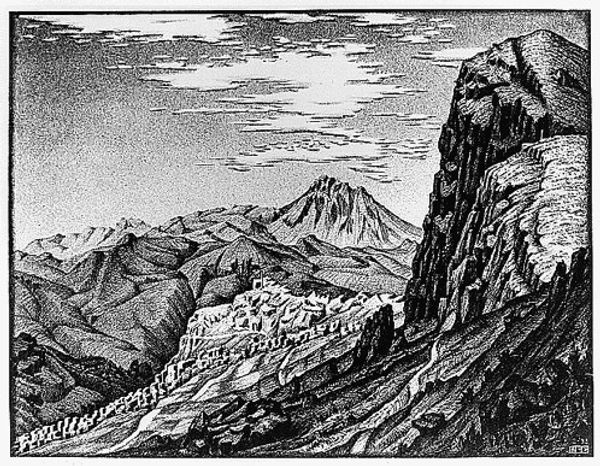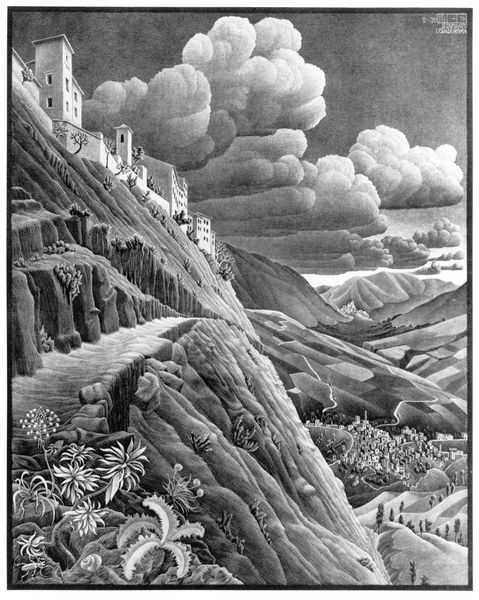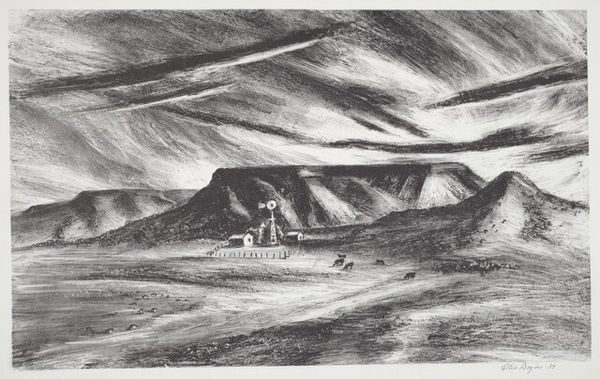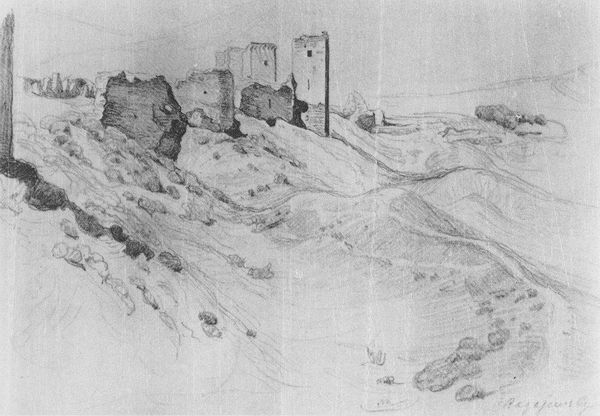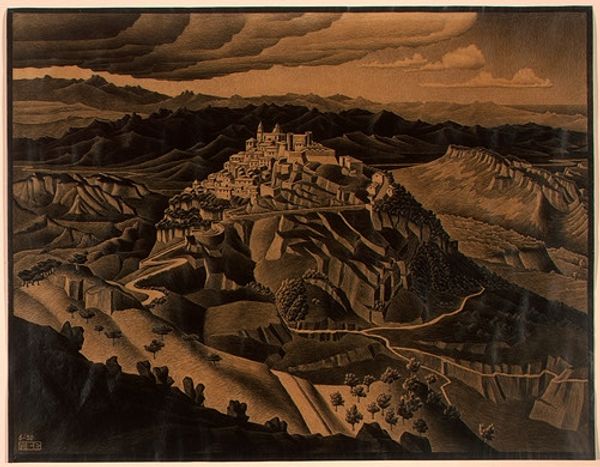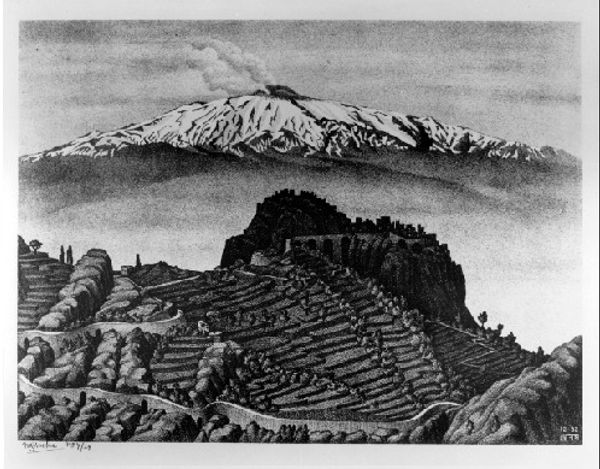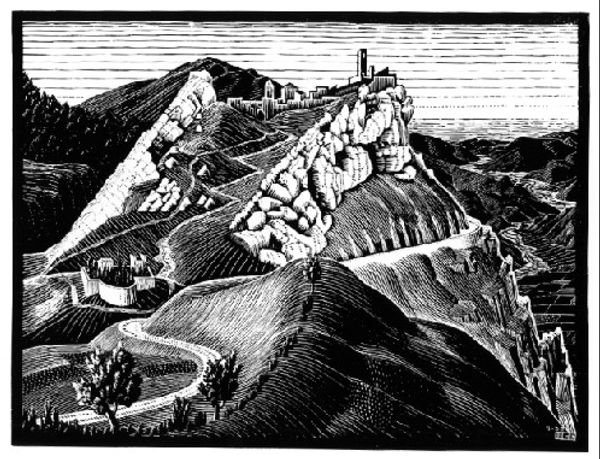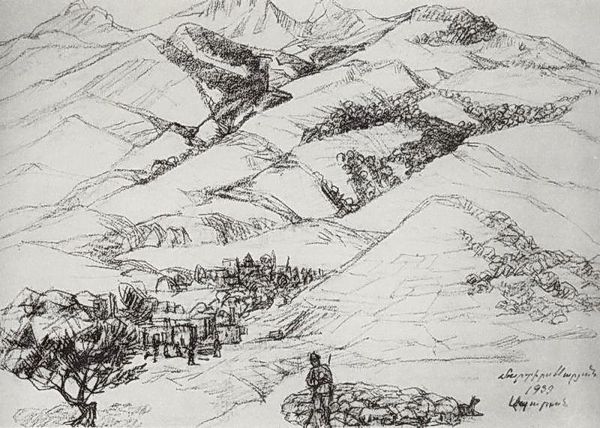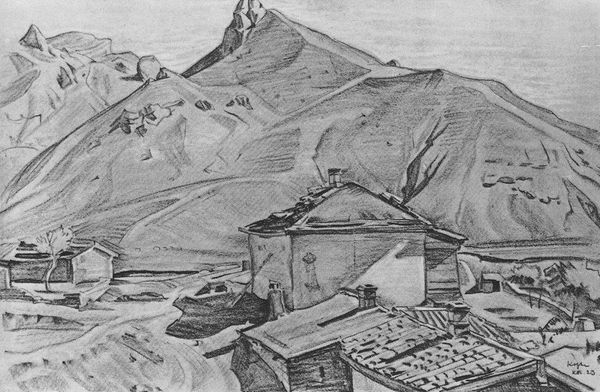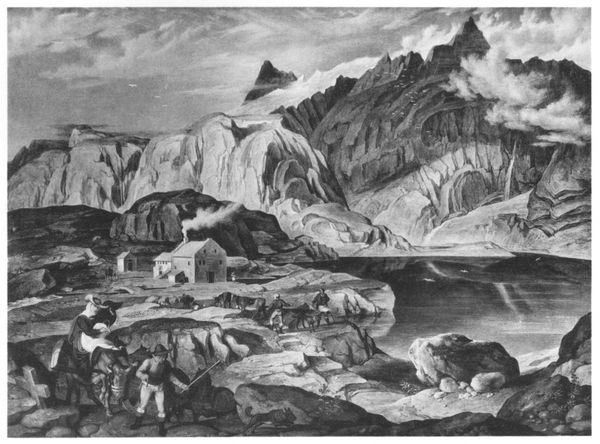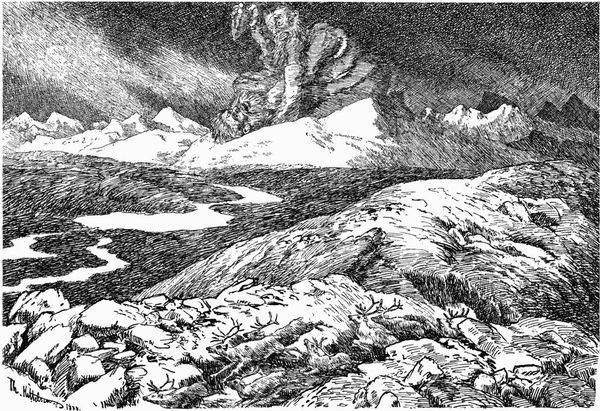
drawing, print, photography, pencil, architecture
#
drawing
# print
#
landscape
#
house
#
photography
#
geometric
#
mountain
#
pencil
#
architecture
#
realism
#
building
Copyright: M.C. Escher,Fair Use
Editor: This is M.C. Escher's "Cattolica of Stilo, Calabria," created in 1930. It seems to be a print, possibly a lithograph or etching, showing a very solid building atop a hill, overlooking a somewhat desolate landscape. What strikes me most is the stark contrast between the geometric architecture and the organic, almost barren hillsides. How do you interpret this work? Curator: Well, consider that Escher was deeply influenced by his travels. This image reflects the rise of architectural interest intersecting with notions of cultural preservation that blossomed in the early 20th century. Italy, in particular, became a site where artists could grapple with history through its physical structures. Editor: So, this work isn't just about a pretty building in a landscape? Curator: Exactly. The "Cattolica" itself is an example of Byzantine architecture in Southern Italy. Escher wasn't just documenting its appearance, he was participating in a broader cultural dialogue about Italy’s layered past and the role architecture plays as a vessel of cultural memory. Think about the date - 1930. How do you think that might shape how we view his depiction? Editor: That was during the rise of Fascism in Italy… So, perhaps Escher's choice of subject also engages with ideas about cultural identity and the Italian landscape under Mussolini’s regime? Is he maybe celebrating a specific type of Italian heritage? Curator: It’s a vital connection. The regime was keenly interested in visually promoting Italy's history, architecture, and landscapes. Escher, perhaps consciously or unconsciously, inserts himself into this visual rhetoric. We have to question the intentions of displaying or creating images in a time of shifting power dynamics. What public role might art have had here? Editor: That's a perspective I hadn't considered. The landscape almost feels less like a backdrop and more like a stage for the building’s significance, viewed through a political lens. Curator: Precisely. It adds depth to the experience to understanding an artist was inevitably connected to socio-political contexts. Editor: This conversation really shifted my understanding from just seeing to truly *interpreting* this art! Curator: Excellent, and that's what makes art history fascinating; connecting what we see to the broader contexts in which art is created, displayed and appreciated.
Comments
No comments
Be the first to comment and join the conversation on the ultimate creative platform.
